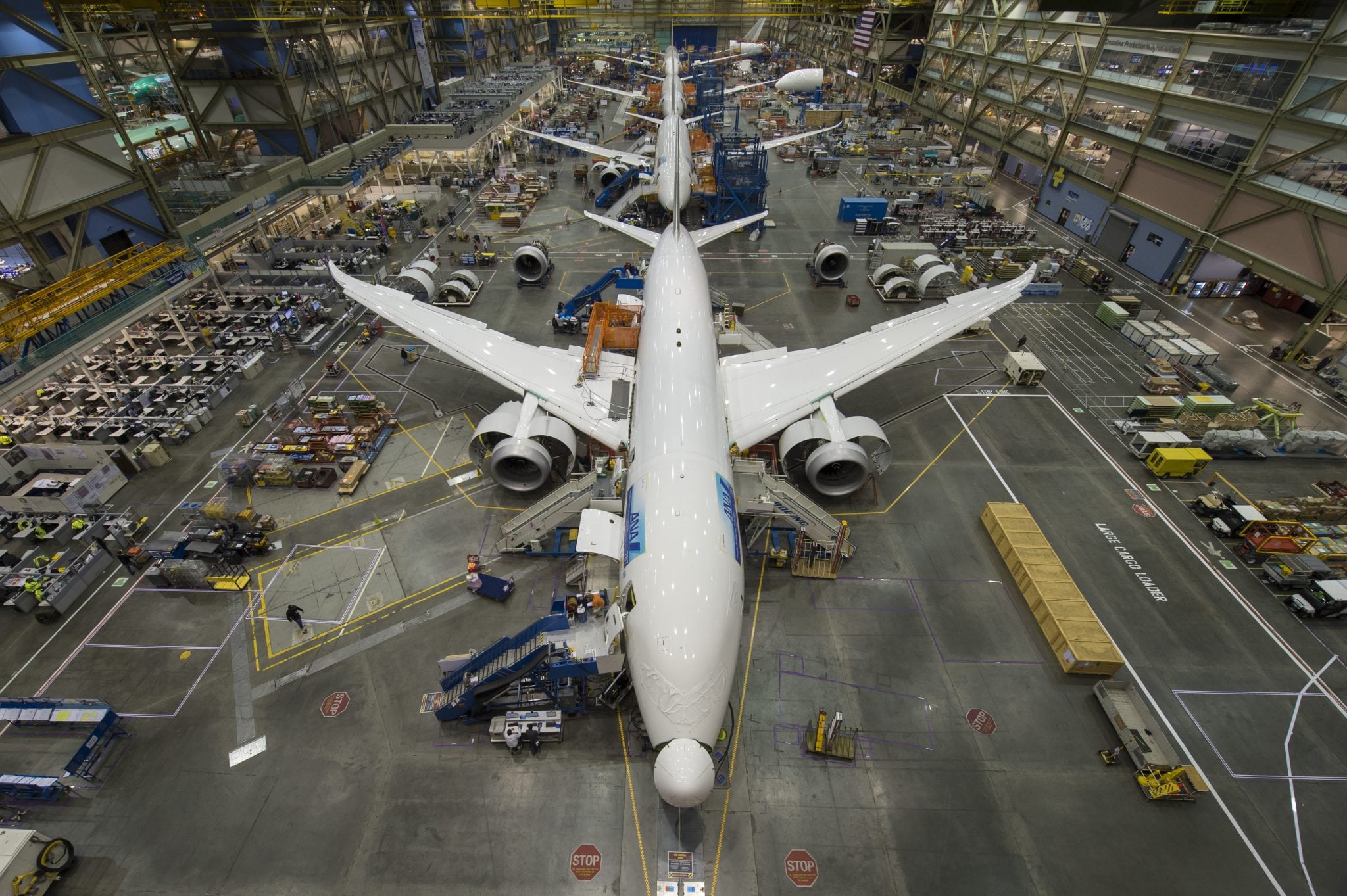[Avionics Today 10-22-2015] Boeing posted better-than-expected third quarter 2015 numbers, delivering 9 percent revenue growth over third quarter 2014, to the tune of $25.8 billion. The significant uptick was driven by record commercial deliveries, which topped 199 during the quarter, compared to 186 aircraft in the same period last year, a 7 percent increase.
 |
| Boeing 787 production line in Everett, Wash. Photo: Boeing |
“Commercial airplanes captured $13 billion of net orders during the third quarter and backlog remains very strong at $426 billion and nearly 5,700 aircraft equating to more than seven years of production,” said Gregory Smith, chief financial officer and executive vice president at Boeing, during the company’s third quarter conference call on Wednesday. The demand will remain strong for commercial aircraft in coming years, according to Boeing President and CEO Dennis Muilenburg, who said current market outlooks are calling for 38,000 new aircraft and 6 percent year-over-year passenger growth over the next 20 years.
The company raised guidance to reflect the uptick in the “relatively healthy” commercial market, driven by improving airline profitability, solid air passenger traffic, and meaningful replacement demand, according to Muilenburg.
“The company revenue guidance has increased $500 million, now be between $95 billion and $97 billion on higher commercial airplane deliveries. [Boeing Commercial Airplane] delivery guidance has increased now five airplanes to be from 755 to 760,” said Smith.
The increase in demand and air traffic is accelerating the production of new aircraft, such as the Boeing 787-9, for which deliveries and production rate is now outpacing the 787-8.
“On the 787, we continue to expect the program to be cash positive in the fourth quarter and we still anticipate deferred production to decline shortly after we achieve the 12-per-month production rate later in 2016,” said Muilenburg.
For the 787-8 the company has seen cost reduction decline to the tune of 40 percent over the last 230 deliveries, according to Muilenburg. The 787-9 has seen its own share of cost savings, putting up a 30 percent cost reduction over the first 50 deliveries.
“Driven by continued cost reductions, a healthy mix of Dash-9s and a benefit of favorable timing on quarterly spending, 787 deferred production increased $577 million to now a balance of $28.3 billion in the third quarter,” the CEO added.
With the 787 on its way up, the 777 long-range wide-body jetliner is seeing a slowdown in orders, caused by what Muilenburg says may be some ambiguity in the market.
“We have some hesitancy right now in the wide-body marketplace around cargo recovery and uncertainty with the Ex-Im Bank. That’s causing some customers to pause a bit on decision-making so it’s more of a timing issue rather than a volume issue,” Muilenburg said, referencing the July 1 lapse in the U.S. Export-Import bank, which has been stalling purchases for largely big-ticket, international sales.
Muilenburg still sees a strong market for both narrow- and wide-body aircraft, however, noting that the company is booked up for 777 aircraft orders through 2016 and halfway to the sold-out mark in 2017 as the company gears up to transition to the 777X model.
“We are building the 777 bridge with today’s current product line … We are thinking carefully through exactly how we do that transition and the timing of it,” said Muilenburg of the 777X transition, which will begin coming into the production system in the 2018 timeframe leading to entry into service in 2020. “We are trying to pull ahead some of the technology investment in the line, like automation in the fuselage line, to de-risk that transition.”
The wide-body market is still seeing a pick up, however, as the company has announced production increases to compensate for recent demand, including raising the 767 production rate to 2.5 per month starting in 2017. The company currently builds 1.5 per month of the popular freighter jet for which FedEx has announced a 50-aircraft order.
The narrowbody market is also looking toward rate increases, as demand for the single-aisle 737 MAX remains high with 2,900 orders on the books.
“Given the strong market demand, we continue to see upward pressure on narrow-body production rates beyond the announced 52 per month in 2018. However, we remain steadfast in our financial discipline as we assess the market demand for further production rate changes,” said Muilenburg.